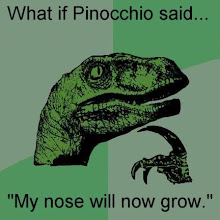How do you tell that I think something is a hot button issue? Three posts on it in less than a week. The issue is the Discovery Institute's event at SMU last week. When we
last left the issue a group of professors had written a letter to the SMU school paper. This morning
another article was published in the same paper, this one by the chair of the Department of Religious Studies a
Dr. Mark A. Chancey. Dr. Chancey does not say what one might expect from a professor of religious studies he says that evolution is a scientific theory and ID is at its heart a religious theory.
Intelligent Design (ID) has not gained much traction in the scientific community. It originated within certain religious circles and has credibility only within those same circles-mostly theologically conservative Christian groups that find aspects of evolutionary theory threatening.
This is true ID is a religious idea a court case can attest to this fact, see
Kitzmiller v. Dover. Dr. Chancey then brings up something that I really thought was important and did not know prior to this, and it helps explain why there was so much backlash against the DI at SMU.
Why the sensitivity over IDers' appearance at SMU? Here, historical context is important.
Unfortunately, the Discovery Institute has a track record of using SMU's prestige and academic reputation to bolster its own claims to legitimacy. Consider this quote from Phillip E. Johnson, a chief ID architect: "The movement we now call the Wedge made its public debut at a conference of scientists and philosophers held at Southern Methodist University in March 1992."
Johnson goes on to characterize that conference as "a respectable academic gathering." This language implies that SMU sponsored an academic conference in which ID proponents participated as full-fledged scholars. In fact, the 1992 event, too, was sponsored not by any academic unit of the university but by a campus ministry-a detail conspicuously absent from Johnson's description.
He goes on to describe the
"Wedge Document", another
interesting read if you haven't seen it. Read the rest of the article and learn but also learn why there should be a separation between science and religion.

No comments:
Post a Comment